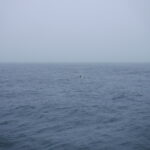For the summer meeting of the Edinburgh Arctic Research Network (EARN), polar researchers from across the UK gathered on a wet and windy June Friday at the Edinburgh Centre for Carbon Innovation (ECCI).
Following a remit to promote collaborations transcending academic disciplines, the conference got under way with a pair of keynote talks focusing on the commercial exploration of the Arctic, and on mitigating negative impacts of such ventures to both humans and ecosystems. First to address the room was Professor Tina Soliman Hunter, director of the Aberdeen University Centre for Energy Law, who opened her talk by emphasizing the particular dangers associated with oil exploration in Arctic waters. Professor Soliman Hunter then went on to describe the current state of regulation and best practice, before introducing the Scientific Regulation of Energy Installations in the Arctic (SciBAR) project, of which she is a co-leader.
Next to speak was Anthony Field from the World Wildlife Fund (WWF), presenting a study of UK business interests in the Arctic, across energy, mining and tourism sectors. The two keynote speakers then took part in a panel discussion with input from the audience. This session in particular emphasized the difficulty of forecasting sea-ice cover in rapidly warming seas, with implications for navigability of the Northwest and Northeast trade passages. The discussion concluded with a plea not to forget the interests of the indigenous peoples who live in the Arctic and interact on a daily basis with the impacts of climate change.
The rest of the day consisted of researchers presenting cutting edge science from oceanography, biogeochemistry, meteorology and glaciology. Attendees learnt about drivers of zooplankton migration and of tidewater glacier melt, the thawing of permafrost and the collapse of past polar civilizations. Concluding with a poster session and opportunities for networking the conference reinforced, even to those of us focused on the other pole, the intricate complexity of our high-latitude environments, and their relevance to people as well as to wildlife.


